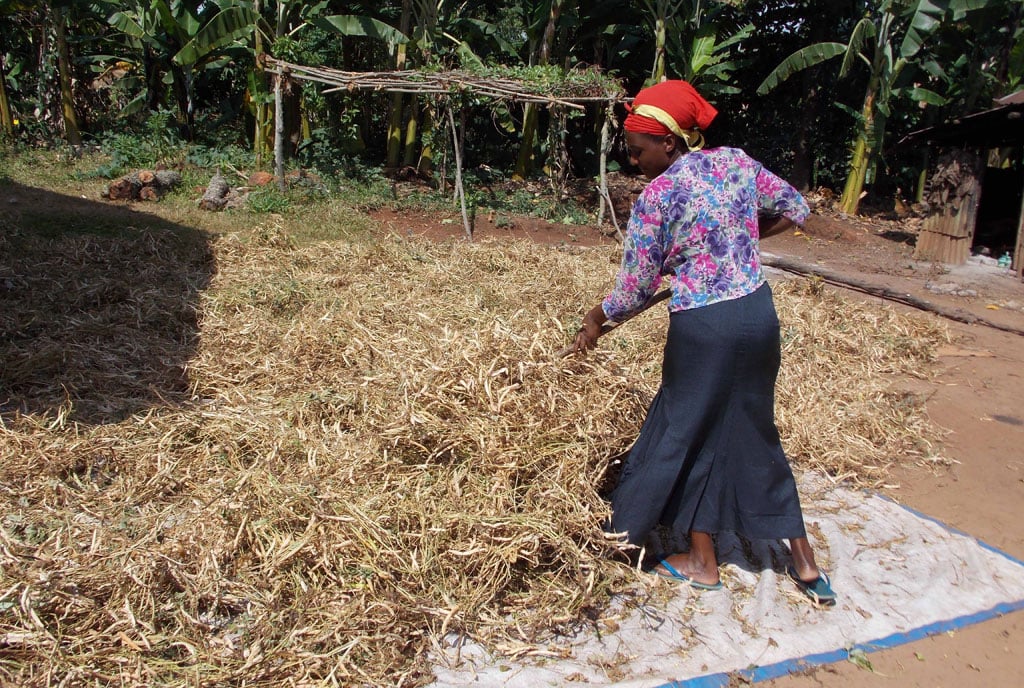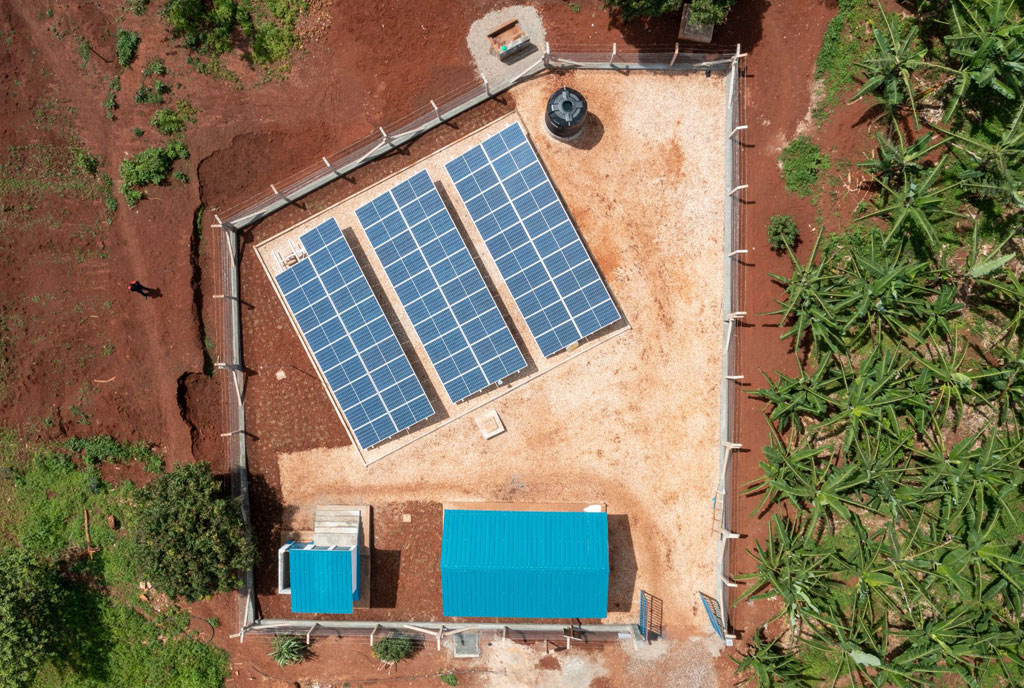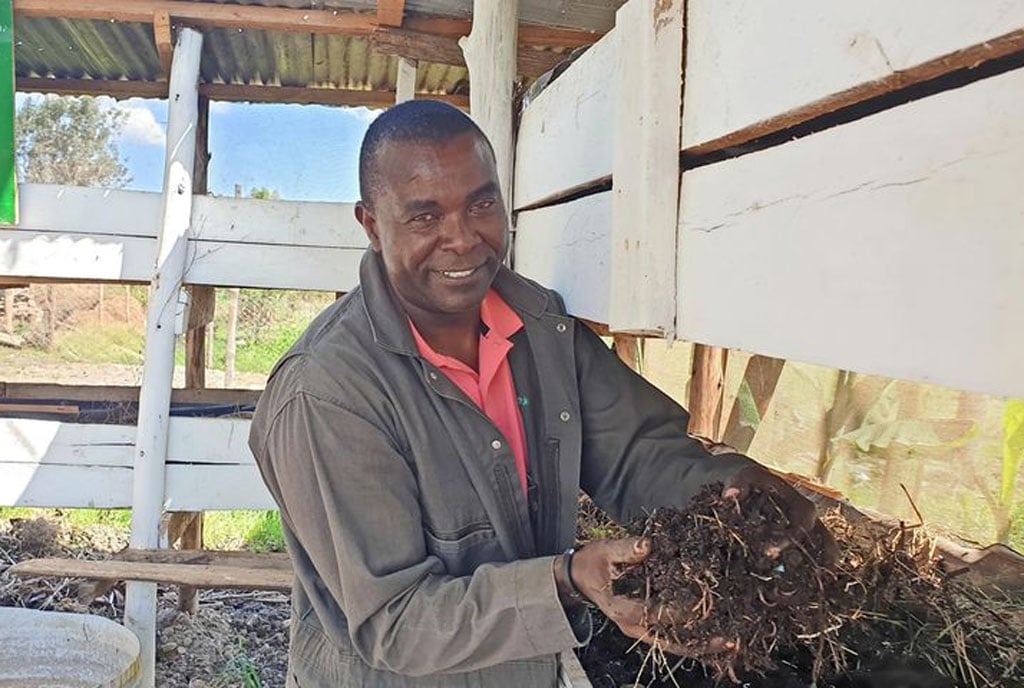Prime
The proper way of shelling beans

A farmer in Lwengo District attends to her beans as they dry under the sun in February 2023. Only large-scale farmers and big organisations have secure stores for grain. PHOTO/MICHAEL J SSALI
What you need to know:
- Uprooting of the dry bean plants should be carried out early in the morning and late in the afternoon when the weather is not very hot to avoid cracking of the pods.
As the schools open this month for the first term, many farmers and traders are talking to school managers about selling their beans. In most parts of the country farmers are getting to the end of the harvesting season for beans and when a commodity is available in good quantities there is less demand for it and many farmers tend to panic about finding buyers of their harvest.
The biggest issue is the price at which the beans are sold. The farmers and traders want to sell at the highest prices possible to maximise their profits and the buyers want to pay the lowest prices possible to save some money.
One of the challenges the farmers and traders face is to keep large quantities of beans in good form until they get a buyer ready to pay a satisfactory price.
Keeping beans for long periods can be a big risk because they could get damaged resulting in severe losses for the farmers and traders.
When to harvest beans
Charles Katabalwa, Managing Director of SAWA Agricultural Development Company Limited, says good bean sustenance begins with observing good harvesting practices. He says the farmer should not wait until all the beans in the field are totally dry for him to begin harvesting them.
“To avoid severe harvest loss the farmer should begin uprooting the beans from the field when only about 75 percent of the bean plants are dry,” he says.
“He or she can go back to uproot the remainder after some days when they are also dry. Alternatively, if some of the bean plants remain green they may be picked and sold in their green form or they can be eaten by the family,” says Katabalwa.
The reason he gives for not waiting too long to harvest the beans is that if the beans become too dry in the field their pods have a tendency to open on their own and the beans may fall on the ground and get lost to the farmer.
How to uproot
Katabalwa goes on to warn that uprooting of the dry bean plants should be carried out early in the morning and late in the afternoon when the weather is not very hot to avoid cracking of the pods. He also says when the dry bean plants are delivered in the home from the field they should be kept under shade to prevent the pods from cracking and spilling the beans. He further says they should be placed on clean tarpaulins or mats.
Spread for drying
“Then after some three of four days when all the bean plants are collected in the home they should be spread over tarpaulins, mats, or cemented floors under the sun for further drying,” says Katabalwa. He says shelling should be done by beating with strong sticks or by using motorised bean shelling machines.
He has a beans protection method which he says is obtained from indigenous knowledge.
Keeping off weevils
He says the farmer can keep the beans free from weevil attack for several weeks by not winnowing them and leaving some broken pieces of the husks in the shelled beans.
He says he has observed that the dry husk pieces somehow keep the weevils at bay. The objects can be removed when the beans are being prepared for cooking or selling.
Keeping them safe
He also says some people put pepper powder in the beans to keep away weevils. Another indigenous bean protection method he gives is to put some ash into the beans. He also spoke about placing dry cypress twigs into the beans as another way of keeping away weevils.

A farmer examines her beans in the garden. PHOTO/MICHAEL J SSALI
He cautions farmers however not to place the beans too close to the walls. “Alternatively the shelled beans can be packed into air tight bags, specially designed for grain storage,” he further said.
“They are obtained from most Agro-input shops. The farmers can also seek guidance from agricultural services extension officers in their various areas about what pesticides to use to protect the beans from weevil attack. And nowadays staff in the Agro-inputs shops can give the requisite guidance on how to use the pesticides. Those who can read can also study the literature that comes with the pesticides to ascertain how they are applied”
A consortium of stakeholders including Uganda National Farmers Federation, Feed the Future Enabling Environment for Agriculture Activity, and World Food Program among many others came up with a pamphlet titled: “Dry Beans –Best Practices for Improved Nutrition and Incomes” which gives very useful guidance about how to protect dry beans after harvest.
Good postharvest handling
It says in its introduction paragraphs that good postharvest handling of beans matters because farmers get better prices and they suffer much less post-harvest losses. “They can participate in the Waterhouse receipt system where they can store the beans until the price improves, and take a bank loan using their beans as surety.”
It also says that when dry beans conform to the standards, and are available in large quantities it is easier to sell them to high value markets with less risk of the grain being rejected by the buyer.
“The traders get a reliable supply of quality dry beans that they can sell to their clients. Processors want continuous and reliable supply of high quality beans. Complying with standards reduces waste and ensures that the final product is of high quality and can earn a higher price. Consumers get food that is safe and nutritious to eat.”
Moisture content
The pamphlet lays special emphasis on farmers making sure that the grains are dry with maximum moisture content of 14 percent. In their groups farmers should endeavor to purchase a moisture meter which they can use in turns to ensure that their beans are uniformly dry. The booklet describes dry beans as dried mature seeds, well filled, clean, wholesome, uniform in size and shape; free from abnormal flavours, stale, sour, or horrible smell and discoloration.
The little book further states that beans must be protected from moulds which come from soil and air and grow when grain is badly handled. Moulds can lead to the presence of aflatoxins which are said to cause cancer and liver issues. No buyer will knowingly offer a high price for poorly handled beans that could have aflatoxins.
Pest damaged beans normally carry holes bored by weevils, insect webbing or insect refuse. The small book warns farmers against broken, chipped and loose coats and split beans.
Advice
No farmer should sell germinated beans. Germination normally happens when the beans are kept in a wet or moist environment. It says further that beans should not bear any foreign matter, whether organic or inorganic. They should not also have sharp contrasting varieties of colour, size, and shape.
Farmers must guard against the presence of pesticide residues. According to the booklet, pesticide residue is any specified substance in food, agricultural commodities, or animal feed resulting from the use of pesticides.
Pesticides are used in agriculture to destroy or repel pests. They are poisonous and dangerous to human health and the environment, if mishandled or mixed with the harvested crops. Beans must not carry such impurities as animal bone fragments, bird or animal excrement, and rat droppings.
Early harvest
The reason Charles Katabalwa, managing director of SAWA Agricultural Development Company Limited, gives for not waiting too long to harvest the beans is that if the beans become too dry in the field their pods have a tendency to open on their own and the beans may fall on the ground and get lost to the farmer.
Keeping beans safe
He also says some people put pepper powder in the beans to keep away weevils. Another indigenous bean protection method he gives is to put some ash into the beans. He also spoke about placing dry cypress twigs into the beans as another way of keeping away weevils.




